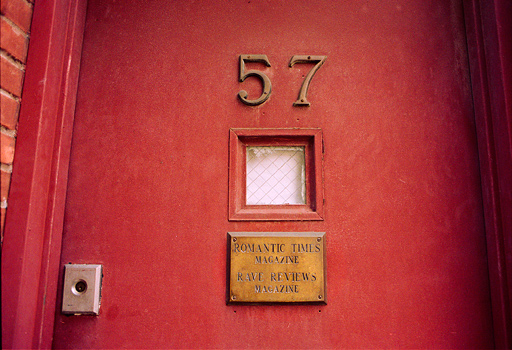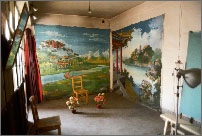August 1, 2008
Your Name, Pomologist
They are building a building in the vacant lot next to the firehouse we call home. Rather they were building a building. One morning 2 backhoes trundled in and dug a hole about 15 feet deep and 20 feet wide. Workers put up a big fence blocking the lot from the street, and then everyone left. The diggers rumbled away and the lot has been quiet ever since. Two months have passed and... nothing. We have back door onto the lot so we can go out there, not that there's anything to do. If we were smokers it would be the type place we would excuse ourselves for a minute or two to have a cigarette.
I don't smoke, but I do eat plums and drink coca cola. My family has been visiting my mother in law all week leaving me here alone. You can live alone for 20 years and never notice silence, but after 4 years of marriage and 3 years with kids, the silence is heavy. So all week I keep finding myself venturing outside with a coke or a plum in one hand and chair in the other. Tonight it was a plum.
People who study plums trees are called pomologists (Pomology is the study of fruit trees—not specifically plum trees). Can you imagine how great it would be to have a business card reading Your Name, Pomologist. (I've always imagined the Pomologists have an intense rivalry with the Olericulturists who study vegetables and who take pomological abuse in silence: "You study the radish?! Celery?! Cucurbits?!! Live man, for once in your life, live! Get your head out of the dirt and consider the glory of the peach and the pomegranate! Persimmons! We KNOW the persimmon. Go now, enjoy your arugula. Be gone.") Many Pomologists think the plum tree originated near the Caspian Sea in the Caucasus Mountains, but nobody really knows for sure. I've seen plum trees in the Hunza valley in Pakistan and a man there told me his valley was the site of the Garden of Eden and that it wasn't an apple that Eve ate but a plum. He also claimed to be the bastard son of the Mir of Hunza and to be one hundred and three years old, but that's another story. Anyway, I was sitting there in the dark, I ate my plum, and then I said out loud to no one in particular, "There are sweeter things." With that I finally felt the day was done and it was time to start dreaming of tomorrow when the house would be quiet no more.
August 1, 2008
Man on a Wire
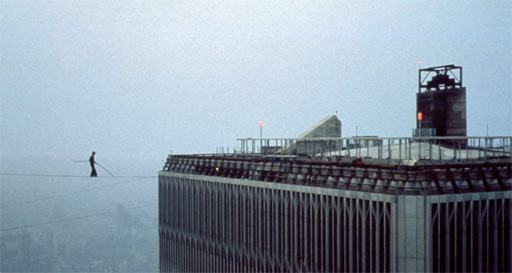 Still from the movie
Still from the movie
I saw Man on a Wire last week and the documentary has lingered with me. The film has several annoying elements: the main character is basically a mime (he's not actually a mime, but let's just say he has a mime-like personality, and who among us does not discriminate against the mimes), the film uses cheesy low-fi reenactments mixed with archival footage (a technique more suited to television than film), and the movie has been overpraised (always suspicious), but despite all that I can't deny the movie's resonance. It's a tale that touches on the act of creating art, mortality, creation, destruction, and ultimately vanity and betrayal which is more than I can say for most films I've seen recently. The filmmakers never mentioned 9/11 as the connection is implicit: the planning that went into this performance was the poetic inverse of the planning that went into the towers' destruction and perhaps this is why the film inspires such emotion in its audiences (many in our audience jumped to their feet and clapped at the end). A. O. Scott wrote in his New York Times review,
"It is easy to imagine that, in contemplating the scale and solidity of those brand-new towers, Mr. Petit saw them at least partly as the vehicle of his own immortality (whether or not he survived the crossing). No one looking up at the New York sky on a hazy morning 34 years ago and seeing a man on a wire could have suspected that the reverse would turn out to be true."Go see this film if you have the chance.
Related: Philippe Petit's Wikipedia page which includes scans of the the famous New Yorker covers he inspired. Also read Paul Auster's Red Notebook which contains a great short story inspired by the walk.
. . .
While browsing around for this article I found a neat little homemade site called Walking Art with many examples of epic walks. The site fails to include the great walking artist Hamish Fulton who is an artistic inspiration and whose family has been very kind to my family.
August 6, 2008
Graciela Iturbide
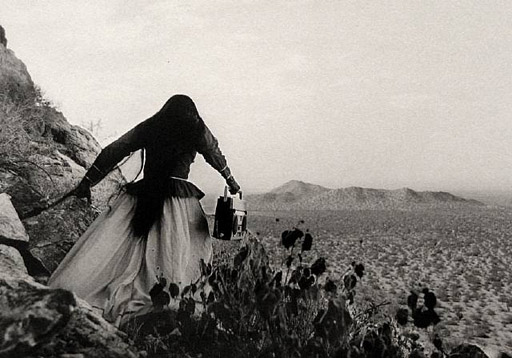
My grandfather made ladies shoes. He didn't physically make them himself, he would cross the border and buy good ladies shoes in Laredo and then have a network of local leather men and cobblers make meticulous copies which he would then label with his Rudy brand (He was also a loan shark on the side). Everyone said his shoes were better than the originals. The leather was better, they lasted longer, etcetera. So some days he would drive around Monterrey and meet with men who tanned leather, cut leather, or dyed leather or who stitched shoes, or fitted soles, or manufactured shoe boxes. Some days he would drive around to the various shoe stores in the surrounding villages making deals for his shoes, and some days he would collect money or collateral from the people who owed him. I used to love to make the rounds with him always up front in those big wide seats of his 70's era Cadillacs or his stylish Ford Elite listening to Pedro Infante on the radio. We covered hundreds of miles on our summers together crisscrossing Monterrey and 50 miles in every direction. My memory of that time is dreamlike. This was pre-Nafta Mexico in the 70's before everything started to look like everything else and many of the things I saw burned into the brain forming the foundation of my visual memory palace. I mention this, because Graciela Iturbide's images remind me of my memories and recalling people and places I saw on street corners and in markets maybe for a few seconds but who were unforgettable. There is not one good site showcasing the range of Iturbide's work, but you can find some of images here and here. If you are really interested, her books are a better bet.
August 8, 2008
Denis Dailleux update
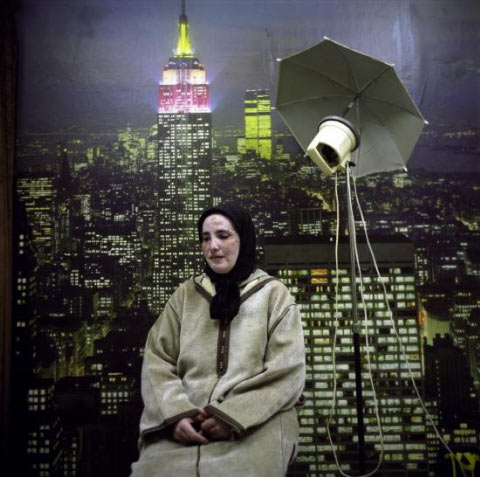
I pointed to Denis Dailleux's Cairo work last year. I'm happy to report that this excellent photographer now has a new website with many more bodies of work online. If these images don't inspire deep wanderlust, well, you just don't have wanderlust.
Last Year's Entry: Cairo
August 10, 2008
The ongoing conversation
August 13, 2008
Olafur Eliasson
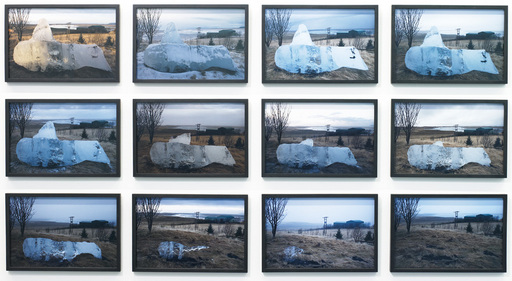 Melting Ice on Gunnar's Land by Olafur Eliasson
Melting Ice on Gunnar's Land by Olafur Eliasson
Sure Olafur Eliasson is famous for his blockbuster art projects like Waterfalls that currently graces this fair city, and sure his big museum installations are thought provoking and spectacular, but I am most moved by this artist's photographs which are usually presented as series in a grid. They are simple and soulful and for me at least are humanizing. There are several photo series on the official Eliasson website, although they are shown in horribly small image sizes. If you are interested you are better off seeking out his books.
. . . . .
Note to artist's everywhere. Show decent sized pictures of your work online. It's 2008, time to size up.
August 18, 2008
I am the pig.
Small beasts from themexican on Vimeo.
The kids dug up some old Halloween costumes today. Blame the camerawork on Jenn.
Related: Happy Halloween
August 18, 2008
Ian Baguskas' Haenyeo
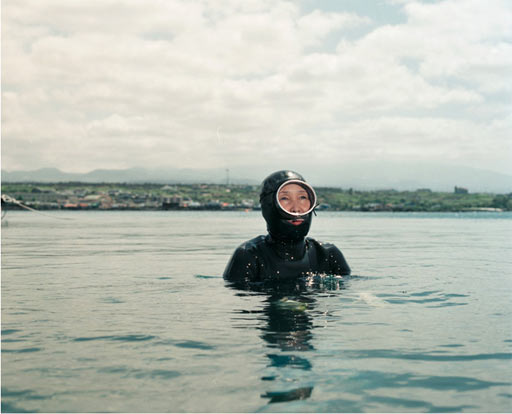
Ian Baguskas who I've linked on this site before and who has worked with us at 20x200 has a nice series of South Korea portfolios worth checking out. My favorite of these is titled Haenyeo. Haenyeo translates as 'sea women' and is the name used for the female divers of Jeju Island. For about 3 centuries these ladies have been diving up to 80 feet to collect octopus, abalone, and sea weed and until recently drove the economy of this island known for it's many rocks, winds, and women. Korean tourism promotes the haenyeo as mermaids but it's a a hard scrabble life and partially because of this, their numbers are declining precipitously. Only around 5200 are thought to be left, down from 20,000 in the 1960's and 40,000 in the 1930's. More than half are in their mid-60's.
August 20, 2008
Truffault Hitchock Tapes
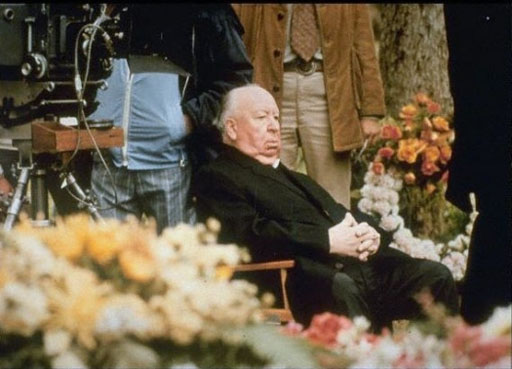
You wouldn't guess it from this blog, but my first love in the arts is not photography, but film and part of every film lover's bookshelf is Truffaut/Hitchcock in which the Truffaut interviews Hitchcock. Today I was googling a quote from the book when I found a site that contains recordings of the interview sessions. 25 MP3s in all. Exciting stuff for your inner film nerd.
Related: pranks in Vertigo, Hitchcock psychology, NYTimes review of Rear Window, NYTimes review of Pycho, NYTimes North by Northwest review, on MacGuffins, Hitchcock cameos, and A wonky but interesting essay on color symbolism in Vertigo.
August 21, 2008
Bianca Brunner
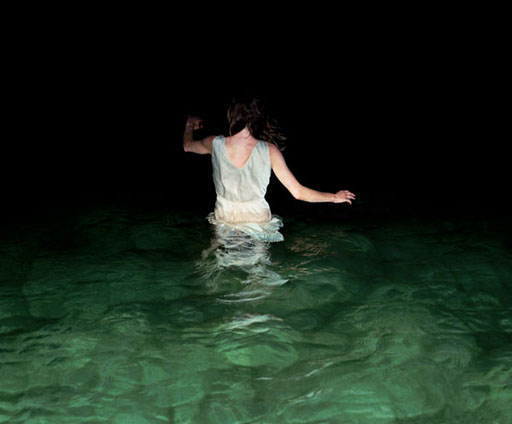
I first came across the Bianca Brunner's work at Aperture's ReGeneration show a few years ago where the image above from her Limbo series was prominently featured. Google Brunner a Swiss born photographer living in England and most of the top results are bloggers wondering where they can see more of her work. A bit of digging reveals work from both her Limbo and Hotel series on commentart.com (text here). Another enigmatic series titled Wood is also online. Enjoy.
August 25, 2008
DoDo Jin Ming
My grandmother had a painting of the sea in her dining room. The canvas depicted a violent sea at night. It was painted by an aunt and was both totally amateurish and utterly compelling. I can't tell you how many times I drowned myself in those waves. It was a scene not unlike the one below by Willem van de Velde (the great Dutch painter of the sea) or of the seascapes of countless artists, known and unknown, who have tackled versions of the same theme - a dramatic sea, threatening clouds, nature unfurled.
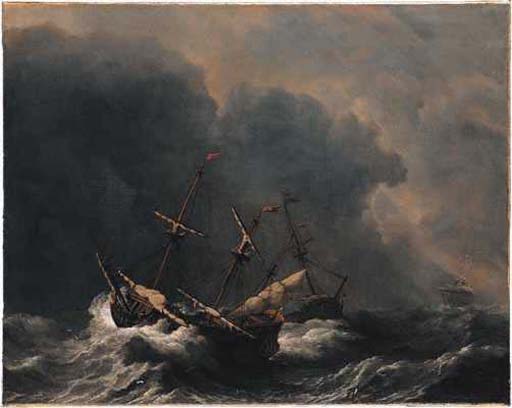
Photographers of course even at the birth of the medium were photographing the sea.
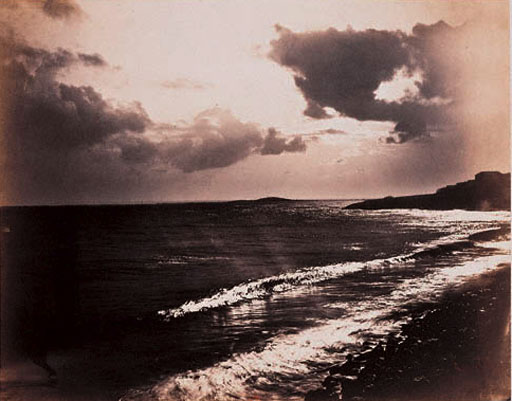
Gustave LeGray was out photographing the sea a few years after photography was invented and (I believe) was trying to recreate the drama of canvases of the great Romantic seascape painters of his day, artists such as Frederic Edwin Church,William Turner, and Winslow Homer. But LeGray was faced with a problem. If he properly exposed for the ocean, the sky would be blown out to white. And if he exposed for the sky, the ocean would be an underexposed featureless black so he pioneered a technique of double printing sky and sea from two negatives and 150 years later he is remembered for his seascapes (his work sells for hundreds of thousands of dollars).
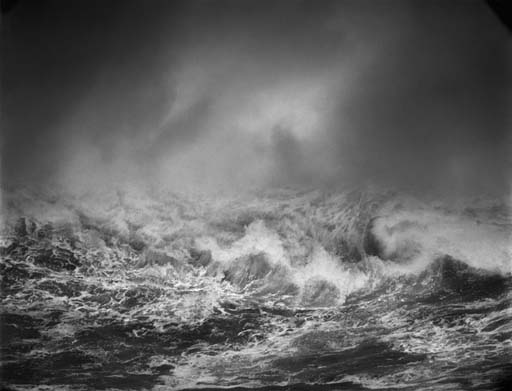
The photographer DoDo Jin Ming is obviously steeped in all these traditions and by using vintage techniques similar to LeGray's (printing sea and sky from separate properly exposed negatives onto one image) and by managing to have herself placed almost directly within the maelstrom of crashing waves (often lowered by rope from rocky cliffs) she's managed to capture what some of the great seascape painters imagined while looking down into the froth from the safely of the cliffs above. In doing this, she manages to elevate this most banal of subject matter into something sublime.
Amazon UK has a copy of her book available. Doesn't seem to be available in the states.
August 27, 2008
Just imagine the editorial meetings
